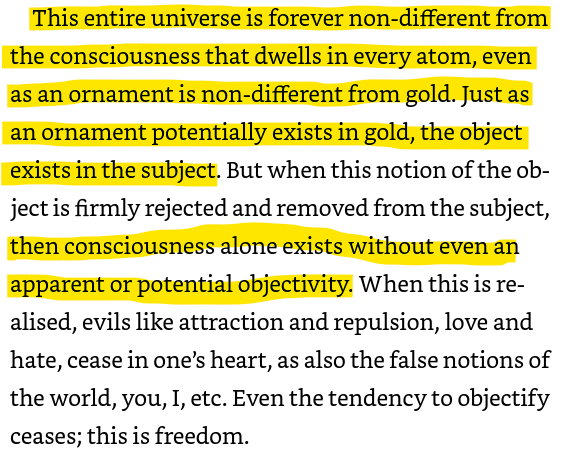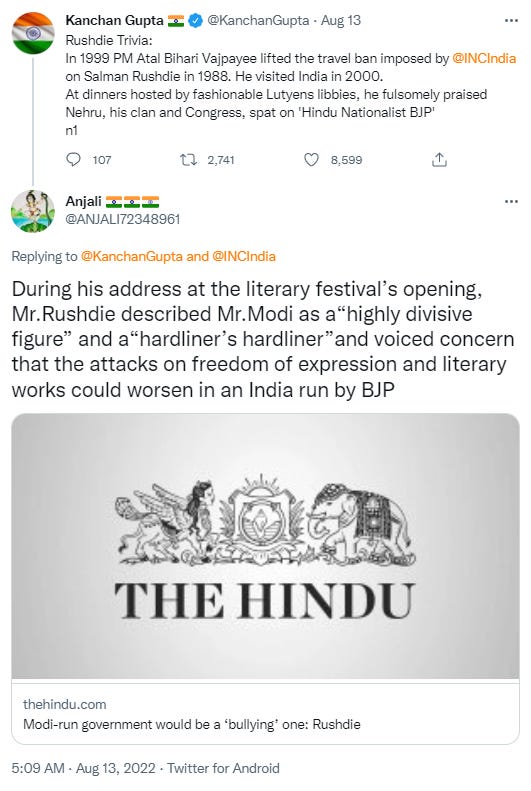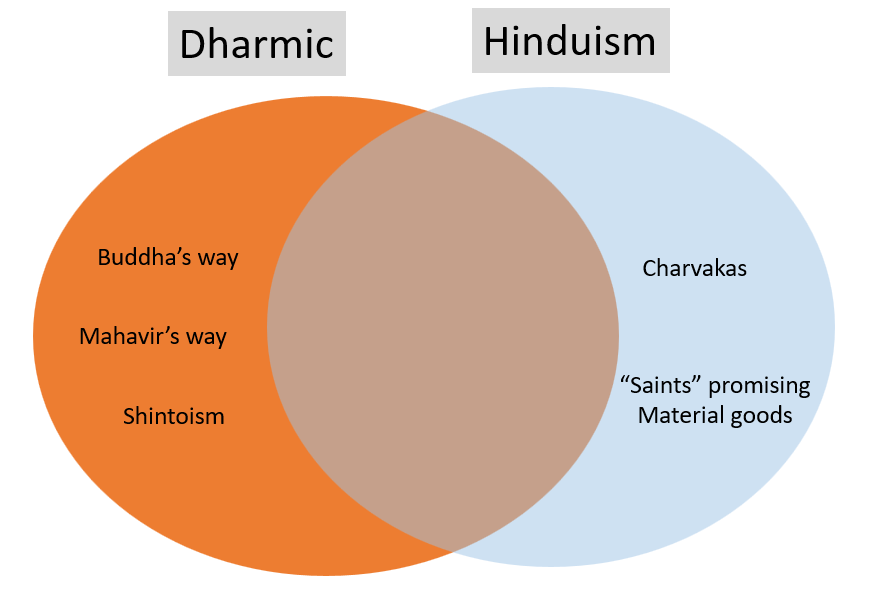Drishtikone Newsletter #352: Assault on Rushdie and Belief systems
Salman Rushdie was attacked in New York for his book "The Satanic Verses". Its a Doctrinal war. We look at it from a Dharmic versus Hindu perspective. A different take.
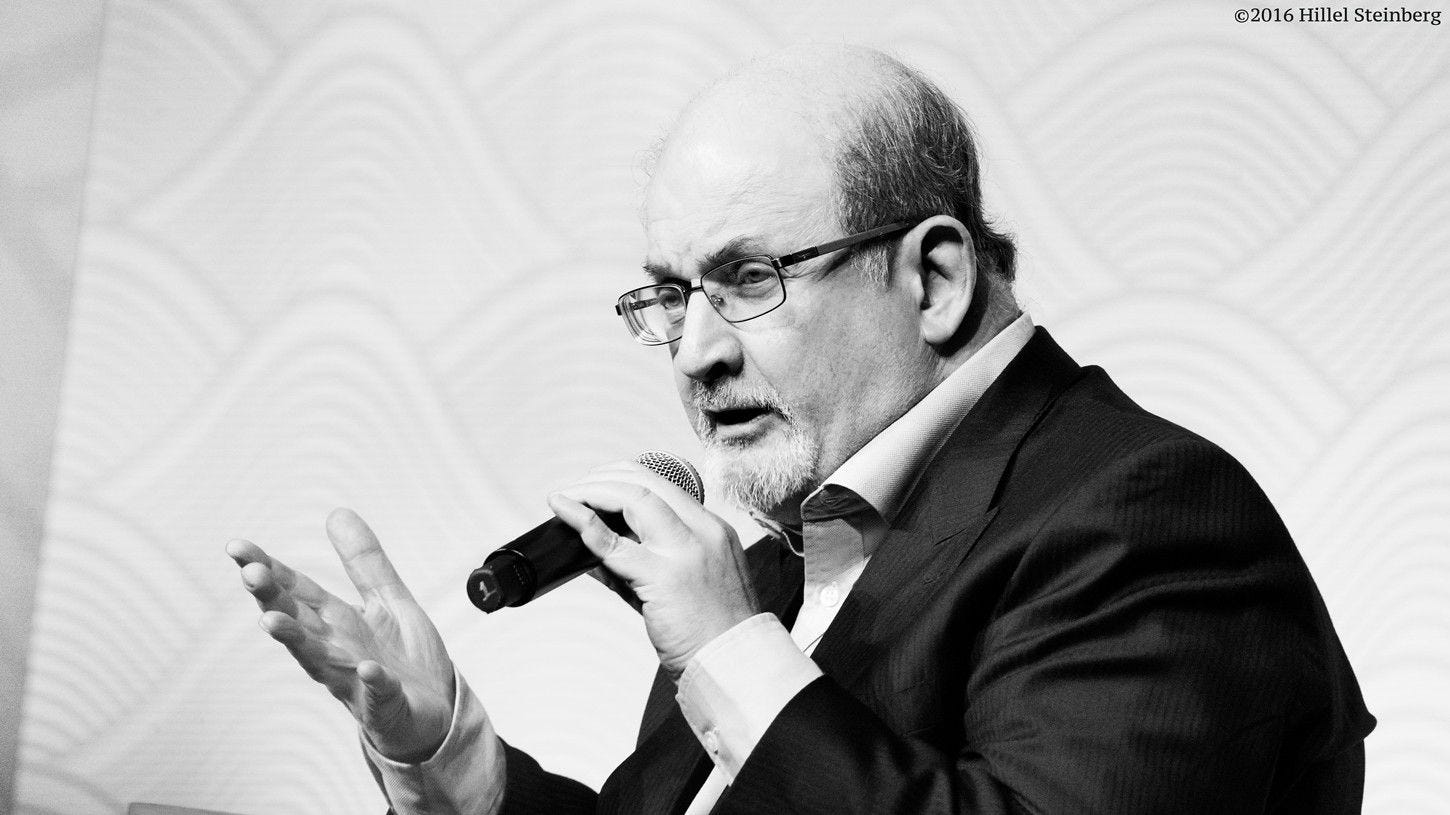

“Life's under no obligation to give us what we expect. We take what we get and are thankful it's no worse than it is.” ― Margaret Mitchell, Gone with the Wind
Where are we headed as humanity?
Many generations have asked this question. And answered in their own ways.
In India, the structure that was created involved two components - Shrutis and Smritis.
While a Shruti was unchanging for it manifested the source of creation which remains eternal, Smritis were a contemporary translation of what was existentially true in cultural ways such that the society can be aligned with the seeking of that truth.
Smritis changed with times and needs of the new generation. Given the challenges one faced.
Unfortunately, for past many generations, we have lost the ability to create our own Smritis.
That is why we have lost all meaning of the Shrutis as well. Smritis are designed to inculcate a seeking for a state that enables us to touch what Shrutis are suggesting is the existential reality. Without a Smriti that has meaningful relevance to our lives and times, we have no path to that existential reality.
And we have a generation that has no understanding of either Shrutis or what made such an undertaking even possible!
It is time to articulate the Smritis of our times.
Assault on Rushdie
Thinking it was some kind of a stunt, the audience first lapped it up since the author was a controversial one. The man dressed in black with a black mask jumped to the stage and stabbed Salman Rushdie 10-15 times in 20 seconds in the neck and torso. Salman Rushdie, author of "Midnight's Children" and "Satanic Verses" fell to the ground and collapsed.
He is on the ventilator and may lose an eye and his liver.
Salman Rushdie’s agent Andrew Wylie said in a statement obtained by The New York Times that “the news is not good." “Salman will likely lose one eye; the nerves in his arm were severed; and his liver was stabbed and damaged," said Wylie, who added that Rushdie could not speak. (Source: News18)
Salman Rushdie was a marked man since his book "The Satanic Verses" came out. It was a fictional story between two characters - Gibreel Farishta and Saladin Chamcha. They are Indian Muslim characters. Farishta is a Bollywood superstar who plays the Hindu deities (loosely based on Amitabh Bachchan and NT Rama Rao) while Chamcha is a voiceover artist in England who has tried to leave his Indian identity behind.
The real controversy is about the dream sequences which are considered blasphemous by the Muslims.
Embedded in this story is a series of half-magic dream vision narratives, ascribed to the mind of Farishta.One of the sequences is a fictionalised narration of the life of Muhammad (called "Mahound" or "the Messenger" in the novel) in Jahilia. At its centre is the episode of the so-called satanic verses, in which the prophet first proclaims a revelation in adopting three of the old polytheistic deities, but later renounces this as an error induced by the Devil. There are also two opponents of the "Messenger": a heathen priestess, Hind, and a skeptic and satirical poet, Baal. When the prophet returns to Mecca in triumph, Baal goes into hiding in an underground brothel, where the prostitutes assume the identities of the prophet's wives. Also, one of the prophet's companions claims that he, doubting the authenticity of the "Messenger," has subtly altered portions of the Quran as they were dictated to him. The second sequence tells the story of Ayesha, an Indian peasant girl who claims to be receiving revelations from the Archangel Gibreel. She entices all her village community to embark on a foot pilgrimage to Mecca, claiming that they will be able to walk across the Arabian Sea. The pilgrimage ends in a catastrophic climax as the believers all walk into the water and disappear, amid disturbingly conflicting testimonies from observers about whether they just drowned or were in fact miraculously able to cross the sea. A third dream sequence presents the figure of a fanatic expatriate religious leader, the "Imam", in a late-20th-century setting. (This evidently satirizes Khomeini himself.) (Source: Wikipedia)
These fantasies were what Muslims found blasphemous.
Cowardly atheists and their double-talk
Many Muslims and self-proclaimed atheists amongst them denounced Rushdie at that time as Iran's Ayatollah Khomeini pronounced a death sentence on him. Javed Akhtar was one.
Split ‘Hypocrisy’ and you will get “Javed Akhtar”. Hr is also equally responsible for inciting to kill Salman Rushdie. pic.twitter.com/BmfsScy9g0
— Oxomiya Jiyori 🇮🇳 (@SouleFacts) August 13, 2022
The truth is that people like Akhtar use atheism as a cloak to do with words and activism what Ghori did with the sword.
They are just cowards who cannot be honest enough to say clearly why they are doing what they are doing. People like him are Islamic apologists who use the convenience of atheism to do what the invaders and jihadis have done all along.
Curious cases of Islamists masquerading as Atheists in India
This hate and lack of civilized behavior have been the hallmark of the Abrahamic religions which were based on the supremacy of their beliefs.
Motivations for war
A Christian pacifist yet staunch believer, Martin Wight who wrote on International Relations, distinguished between the type of wars and drew a distinction between the motivations behind the wars - Gain, Fear, Doctrine. Doctrinal wars were wars, he said, of asserting righteousness based on doctrines that are not just "right for us but for everybody, everywhere."
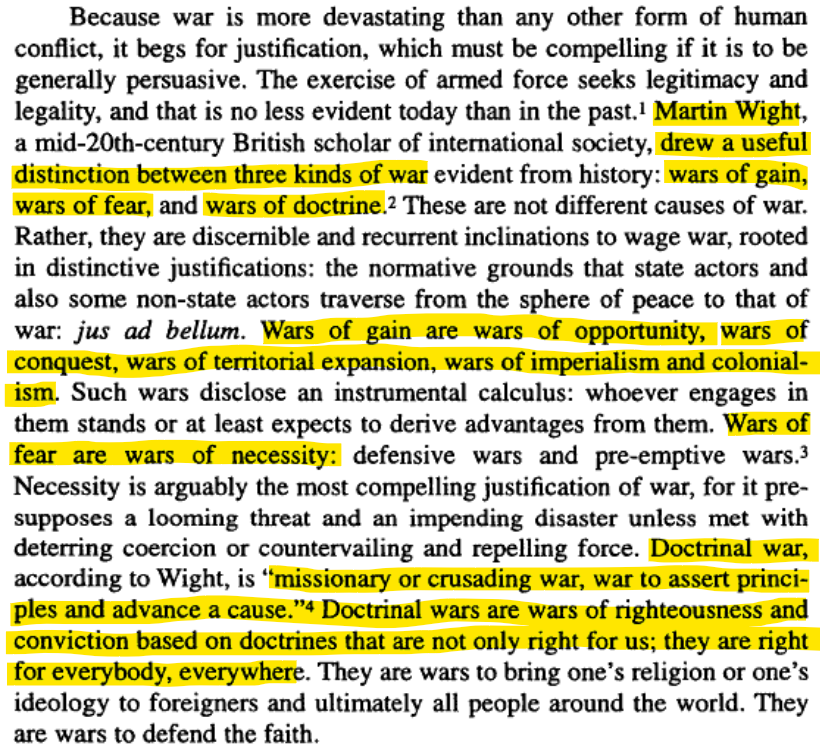
But as we all know - there is no such thing as one motivation for any war.
The Colonial conquest of India and Africa was rooted in gain but the doctrine was the primary tool in that as well. Without the Doctrinal jus ad Bellum (justification for war), even the savage British would have found it difficult to do what they did with Africans and Asians.
Because Doctrine becomes a lead soldier in any war of gain, and theology is always part and parcel of the whole imperialist agenda. To uproot any other society, installing a new god and its paraphernalia becomes imperative.
God is never just an identity created out of nowhere. In all native cultures, god was the highest entity that defined the life and ways of the people. It was the culmination of everything that the culture stood for. Those who lived by the Ocean, would in some way rever the oceans and seas. While those in the mountains have reverence for the mountains and hills. Their idea of the divine was always a manifestation of what they understood to be central to their lives.
Without dislodging that highest idea of their life and culture, it was not possible to break that society.
That is why conversion to a forced and artificial idea of god was always central to imperialism.
Every Imperial war is Ideological and therefore Doctrinal.
Even when it is waged by Communists who call themselves "atheists". They just try to replace the gods of the natives with their idea of the divine - "no god".
Softening a Culture
Every native culture - whether African or Greek or Indian or Polynesian - had an alignment with the elements of nature and life. They understood in their own way how certain things were and those that went against the very ethos were resisted and either eliminated or confined.
The alignment to life and existence and the existential rules governing them had a word in India.
Dharma.
Dharma was at two levels. Existential and Behavioral. The Shruti and the Smriti.
Ornamentness or "Gold nature"
Every generation, geography, and culture had different ways of interaction and rules of how that society could function in a way to keep the citizens from achieving the highest state they could.
In India, that state was Liberation or Moksha. Anything that could enslave one to the cycles of life and physicality was considered Adharma. For, dissolution into the existential root - infinite yet nothingness - was what life's culmination essentially was.
Physicality was a structure that the infinite consciousness took for creative expression. Not its true and real sense. In Yoga Vashistha, Sage Vashishtha explains the dynamics between physicality and consciousness thus.
You can either be rooted in the physicality of an ornament (ornamentness) or be alive to your "gold nature". You can either be fixated on being an object or aspiring to touch your consciousness.
Diversity of paths
To enable that alignment - of physicality to the eternal, infinite consciousness - many paths were devised.
Diverse, mystical, profound yet strange, definitive, and seemingly counter to each other.
The paths were a reflection of life itself. Just as life - from the cosmic level to the atomic - manifests the strangeness, the mysticism, the mysteries, the violence, the love, the bliss, and the waves of destruction and creation - even when the underlying primordial consciousness remains unchanging, the paths traversed every horizon and topology.
The learned did not evaluate the paths based on their ways but on their objectives and the seriousness of a path's aim to drive to liberation.
To accommodate the diversity of the ways, the flexibility of the society was necessary. Otherwise, how could Meera's way of being co-exist with the Aghori's mystical yet seemingly outlandish ways?
In that, there was certain freedom within the society. Allowance for diversity.
It was essential and fundamental for the full expression of spiritual experiments and schools.
THAT freedom to allow for distinctive and diverse ways was the opening that those with their doctrinal supremacist ideas were looking for.
You see, just as the supremacy of a doctrine, however artificial and inconsistent, is a belief, the essentiality of diversity for a society's full expression molded as "every way to god is good" is also a belief.
Let us understand this.
The doctrines of the Abrahamic faiths were not about liberation in the Dharmic sense of going past the limitations of physical existence and touching the infinite consciousness. They were about some god-given "judgment" where that doctrinal god based on certain arbitrary principles would decide who was "good" or "bad" - based on which the inhabitants of this planet earth - alive and dead - would receive punishment or pleasure.
Inconsistent as this theological fantasy was, with many questions lurking at every corner, it was forced down as truth by the force of war. They were about conformity to an ideology fashioned as a doctrine to facilitate imperialist agendas.
Abrahamic god was a war machine. It facilitated conquest. It still does.
That is why there are, were, and will remain inconsistencies and fundamental issues with respect to common sense.
The only way out has been to re-affirm the supremacy of that shaky doctrine via violence. For, no logical discussion can allow for such a fantastical story.
From 'Acceptance of Diversity of Paths' to 'Tolerance of Exclusivity'
Once you twist the insistence on diversity in the indigenous and Dharmic culture into "freedom for all ideologies" and secularism, then the culture is softened.
Such a softened culture is easy to kill by the sword. Doctrinal war needs both - reducing what is existential to the level of a belief and then asserting the need for a supremacist belief to be treated at par with an inclusive set of cultural beliefs and using that equivalence to launch a doctrinal war of righteousness.
When such a war is launched after the inclusive culture has been twisted and turned against itself, no one even resists it.
The Hindus, for example, have never resisted how they have been denigrated not just in poetry but in popular Bollywood songs by calling them Kafir and characterizing the worshipping of murtis (idols) as something shameful. All in the name of "inclusivity"!
When Dharmic ways are fashioned and brought down to the level of a belief, then the diversity of spiritual paths is bastardized into tolerance for every ideology, even those that espouse exclusivity!
Yes, the society was open to accepting diversity of any path that enabled liberation and full expression of any life. But ideological supremacist belief systems were the exact opposite of such an expression. They, by definition, were opposed to the full, free, and diverse expression of life itself.
They would enter as "another way" with the explicit doctrine of killing and finishing off every other way, and yet insist on equality!
In pure Dharmic terms, where Dharma in social terms are ways that allow for alignment with the consciousness, such restrictive, supremacist, and exclusive belief systems were Adharmic from the ground-up.
Yet, they were allowed in the Greek "polytheistic" society and the Hindu society because, well.. they were just "another way". Even when they were desirous of the destruction of the incumbent way of life!
Khomeini Versus Rushdie - What's the difference again?
Let us now look at Rushdie and the attack on him a little deeper.
Islamism is a supremacist belief fundamentally. And, that is where the attack on Salman Rushdie was essential for those who swear by the doctrines.
Actually, if you observe closely, it really was a war of doctrines.
Khomeini's versus Rushdie's.
Because essentially - at the very root of things - they both were not that different really. Rushdie may think that he was fighting a religion that was inconvenient for conducting his life, but he was jettisoning only the inconvenient part of that religion, not its structural underpinning.
You see, the theological edifice of Islam - and other Abrahamic faiths - has been possible because of a structure that does not look at things the way they are and seek to understand how life works. It treats everything as an ideological challenge and shoots for supremacy of one's ideas - where a god's story and definition are constructed and then thrust upon everyone.
No one has seen such a god, nor is there any evidence for such a god. No probe or telescope has found such a "male god working and behaving as a human, who is separate from creation" - anywhere in the Universe or Multiverses!
So was Rushdie truly revolting against the idea of belief, any belief fundamentally, and rooting for seeking the truth? Or just fighting a belief system that he found inconvenient?
Let us understand this fully.
Rushdie's love was not for freedom of thought but for freedom of only his thought. Just like it was for Khomeini.
In 1988 Congress on the insistence of Syed Shahabuddin, Khursheed Alam Khan (Salman Khursheed's Father) and Rafiq Zakaria (CNN's Fareed Zakaria's father) banned the book Satanic Verses ahead of all other countries.
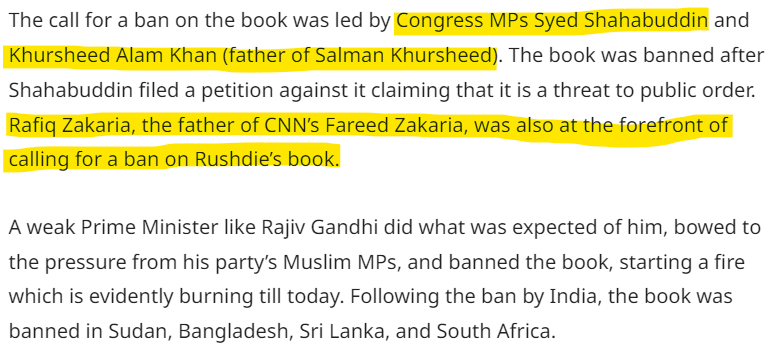
The call against Rushdie was started by Jamaat-i-Islami and the Congress in India and Pakistan set in motion the battle that accentuated the rivalry between Saudis and Iranians and their urge to "lead the Islamic world" and so do what they could do.
While Saudis funded the United Kingdom Action Committee on Islamic Affairs, a body created to fuel pressure on The Satanic Verses in the UK, Khomeini did what he could - issue a fatwa for death against Rushdie. (Source: The Guardian)
So while Congress banned Rushdie, it was in 1999 that BJP's Vajpayee lifted the ban on him.
What did Rushdie do when he came to India? He criticized the BJP for being "Hindu Nationalists" and praised Congress for their liberal ways. Go figure!
Why would anyone do that?
Because in the underlying mindset, the structures have not changed.
Hindus, even when they may be fighting for their indigenous rights and cultural ethos encroached by the Islamic ways of the invaders and the Christian assault by the British, were always the enemy.
Those who have been assaulted under the Doctrinal wars - active or subtle - were always wrong when they resisted.
Nationalists, you see.
That his victimization was an extension of that Doctrinal war and what was being brought upon the Hindus due to that - was somehow completely missed by Rushdie.
Why?
Why would a person so eloquent and seemingly well-meaning do to others what Islamists were doing to him?
Because he still carried the Abrahamic structures. Supremacy of my belief - even when it is fashioned as atheism - over yours.
Sometimes I think - it has been about 130 years since someone of the stature of Swami Vivekananda touched the shores of the United States and shared the light that his Guru Ramakrishna Paramhans entrusted him with. How is it possible that one has not seen a real enlightened being or Master from this land in so many years who is aligned to the Dharmic way of life?
Because even when people followed Swami Vivekananda and many other Gurus who came here, they could not go beyond the fundamental structures that Abrahamic beliefs had constructed and inculcated.
Just like in the case of Rushdie, atheism was not a calling for looking at life and its existential truth afresh. But about replacing one dishonest and supremacist belief with another. Just this time, Rushdie was the new Prophet.
It's not that one does not sympathize with what Rushdie has had to go through. One does.
But does he help any other kind of world to take root?
If the structures of beliefs - limited, exclusivist, aggressive and dishonest - remain the way of the world, then Rushdies will not just keep happening but be responsible for the next Rushdie to happen.
Worse, they would ensure that something much worse awaits a Yazidi or a Hindu woman.
Dharmic or Hindu?
And, with that, one comes to the discussion which should be addressed.
Am I a Hindu or Dharmic?
Charvakas and those beings who have attained certain Siddhis promising material goods are part of the "Hindu way of life" even when they are fundamentally Adharmic. While I may get what I want in material terms based on my desires, in the Dharmic sense, I am firmly rooted to the physicality - the ornamentness as opposed to realizing my "gold nature", as Sage Vashishta discussed.
When one identifies himself as a Hindu, he translates the diversity of Dharma as the acceptance of all the ways. Even those that are fundamentally rooted in beliefs that have no allowance for looking at consciousness or Truth as the goal.
Seeking for Truth - the one, existential truth that was when no life existed and will remain when nothing exists - is not an indulgence in some belief. It is an act of deep questioning or dissolution of self.
Truth is neither Hindu nor Christian or Islamic or Buddhist. It is beyond humans, our planet, our galaxy, or this universe. It is all-encompassing and eternal.
That is why it has been called Hiranyagarbha - or the womb of existence - or the infinite consciousness. The Gold nature or the Ocean where waves of creation go up and down.
That is characterized by those who sought and realized the Truth. It won't be Truth for me unless I seek and realize it for myself.
Realizing by seeking is held the highest for this very reason.
A spiritual path starts when belief ends.
Beliefs can be distorted. Twisted. Made to engage in make-believe and pretend it is the truth, however limited it may be in its expanse or understanding.
A Dharmic society would not allow supremacist and exclusivist ways to persist for they are essentially adharmic. Hindu society has and will. All in the name of diversity, secularism, freedom, and the rest of it.
Ask yourself - if the beliefs and theology that are shared in the various Abrahamic books were presented to you sans any label of religions backed by billions - would you even consider them with any seriousness?
Why not?
Because they just don't make sense socially or spiritually. So why do we tolerate such beliefs that are inconsistent with life?
Because of numbers.
Numbers of those who assert them as the only truth and can kill if you disagree with them.
All for your good of course!
While Dharma can find a way to challenge the belief systems and their structures, the Hindu way of life has found it difficult to defend.
So ask yourself - what do you seek? Or do you seek anything at all and are happily ensconced in the cocoon of your beliefs? Those that can are changing and can be twisted.
Video Corner: Mindset of a Psychopathic Killer
Arthur Shawcross was a serial killer who is a psychopath. He was found guilty of killing 2 children and 11 prostitutes. He practiced cannibalism and mutilated the victims which made him one of America's most notorious serial killers. He killed 13 people by asphyxiation.
It is interesting to see how he talks about the righteousness of what he was doing. No remorse. No self-introspection. This video is very instructive in understanding what belief and self-righteousness can really make one do. The believers in Europe have used unspeakable ways of torturing and killing other humans for what they righteously believed was heresy or devilry. Check it out in this video - Medieval Christian Torture Devices.
Featured Image: Flickr/Hillel Steinberg
If you like our content and value the work that we are doing, please do consider contributing to our expenses. CHOOSE THE USD EQUIVALENT AMOUNT you are comfortable with.
If you like this post - please share it with someone who will appreciate the information shared in this edition.
Today’s ONLINE PAPER: Check out today’s “The Drishtikone Daily” edition. - THE DRISHTIKONE DAILY




